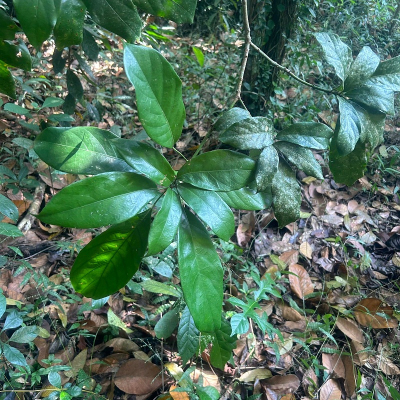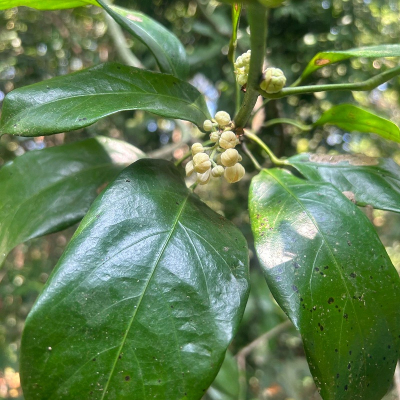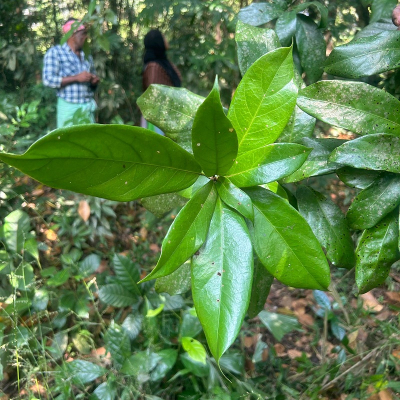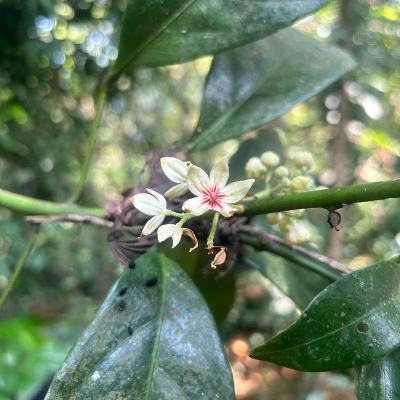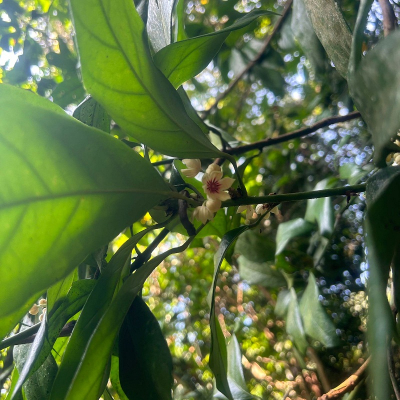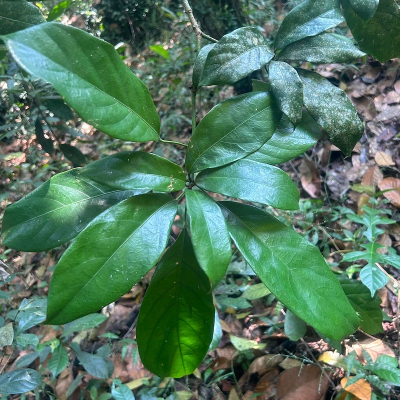Distribution and Habitat: C. nitida is native to tropical West Africa, but has been spread across Africa by man and is now cultivated from Senegal to Nigeria, as well as in the West Indies and South America
Botany: It is an evergreen tree. The adult trees grow up to 20 m tall, with a rather short stem and a dense low crown with few thick main branches.
- Leaf: Large leathery leaves are variable in shape and size, generally oblong or elliptic, abruptly and shortly acuminate at apex, up to 33 x 13 cm, usually smaller.
- Flower: off-white with dark red stripes and grow in axillary clusters. They are unisexual and male and female flowers appear on separate trees. The male trees often set flowers before the female .After wind or insect pollination, the fruits take 5-6 weeks to mature. The male trees flower annually whereas some female trees flower only once in two years.
- Fruit: Ripe fruits are dispersed by bats, birds and squirrels, which readily eat the fruits. Fruiting generally takes place during the wet season between June and October, and mature fruits can be harvested after the trees have shed their leaves. Usually new leaves develop at the same time. Small petal-less, yellow flowers produce long chocolate coloured pods within which there are 4 to 15 reddish brown seeds, or cola nuts. The red seeds are known as 'cola nuts'. They are 2.5 cm long and are surrounded by a tough thin white fleshy skin. An average seed weighs 10-20 g.
Chemical constituents: The seeds have a crude protein content of 9.5%, a caffeine content of 2.8% and a fat content of 1.4%. Fresh seeds contain 1-2% caffeine, while drying the seeds increases the caffeine content to up to 5%. The fruits enclosing cola nuts contain caffeine, tannin, and theobromine.
Properties: The seed also contains kolanin, a compound with a sugar attached (glycoside),that can stimulate the heart.
Uses: For use during conditions of mental and physical fatigue, and as a supportive treatment for depressive states and mental confusion .They are locally used for healing swellings and wounds and to treat diarrhoea. Kola nuts are used in the preparation of non-alcoholic beverages.
Agro technology:
Soil and Climate: It is a tropical rainforest tree, requiring a hot, humid climate; however, it can survive the dry season on sites with high ground water. It is present in areas where the annual rainfall is 1200 -1800 mm, with well marked wet and dry seasons. C. nitida has long been domesticated from its natural stand and is now found mainly planted in pure stands and sometimes as an important stand in natural habitats. These trees are usually destroyed during forest clearing.
Propagation: Seeds.
Seed viability and storage: Seeds of this species are recalcitrant, i.e. they are sensitive to drying and low temperatures. They do no tolerate drying to less than 30% moisture content. Seeds can be maintained for one year or more without loss in viability, with seeds wrapped in banana leaves at room temperature.

